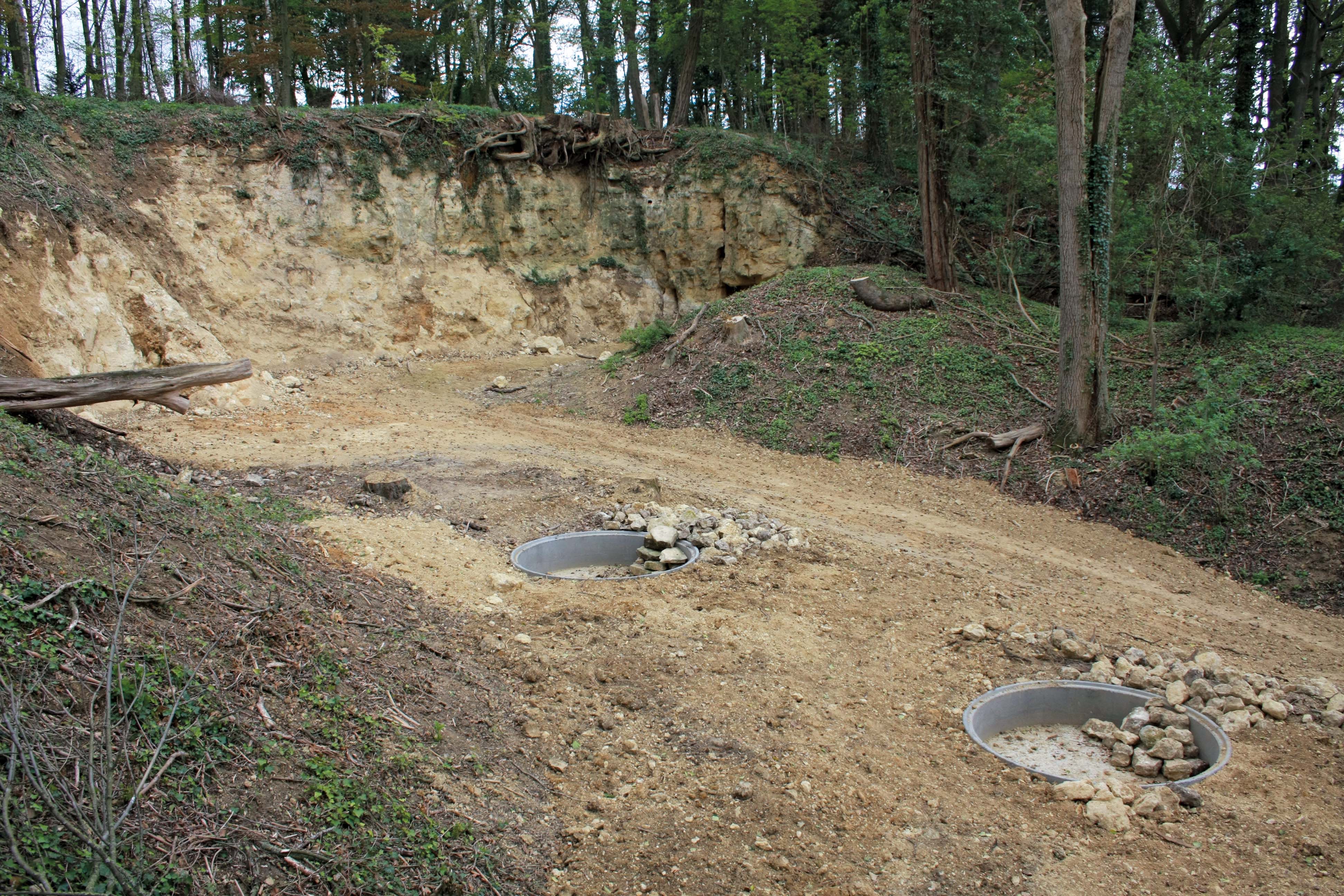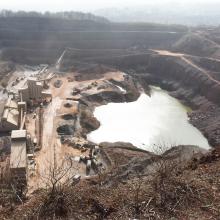
RESTORE is a project working to bring nature back after minerals extraction in north-west Europe. Debra Royal, a member of the RESTORE project team, discusses its vital work.
There are some 7,200 quarries across north-west Europe, representing 250,000hectares (ha) worth of potential to supply the minerals necessary to support the developing economy in the European Community and provide us with the day-to-day products on which we depend – from toothpaste, to construction materials, to glass production. However, such sites also represent the potential to deliver benefits for the natural world and local communities at the end of their working life.
RESTORE is a project made up of seven partner organisations working across north-west Europe in the UK, Belgium, the Netherlands and Germany and funded by the European Regional Development Fund through the Interreg IVB NWE programme. It is headed by the RSPB as lead partner and incorporates much of its existing advisory work with the minerals industry in England, through the Nature After Minerals (NAM) programme. In working together over the last three years through close collaboration and sharing of skills, innovation and best practice, this partnership has looked to capitalise on this potential for worked-out (and operational) mineral sites to be restored with the needs of nature and people firmly in mind.
As an intrinsic part of its licence to operate, the minerals industry is increasingly obliged to restore its finished sites to an agreed and acceptable after-use. With this obligation, there is a growing realisation both from within and outside of the sector that the minerals industry is in a unique position in the world of commerce and business: very few industries have such an opportunity to give something back and help halt the perilously-sharp decline in biodiversity we are witnessing today. By working to restore mineral sites for a nature and people outcome, the minerals industry is in a strong position to help realise the potential of some of these 250,000ha of land under its influence, to deliver for local communities, economies and the natural environment.
With this in mind, the RESTORE project has been working to help create a framework for this to happen, through focusing its attention across four work packages:
1) Policy into practice: The project partners came together to form a Policy Expert Group to undertake a full review and analysis of mineral-related policies, from local to EU level, across north-west Europe. The review concluded that there is a ‘can-do’ system but that we are not using it to its full potential. The key findings of this review - including best practice examples and how this can be built on in the future - are summarised within the project’s Manifesto.
2) Best practices in restoration and aftercare of mineral sites: Working on sites across the project area, the partners have used innovative methods to enhance existing and former mineral sites - creating new habitat and boosting populations of European Protected Species - and shared this knowledge through a programme of best practice demonstration events.
3) Development of a project website and interactive map: A project website has been established to provide a central resource for information sharing, including the outputs from the project. Best practice case study examples in minerals restoration from across the project area are also to be shared through an interactive map, hosted through this project website.
4) Ecosystem services and the economic value of mineral sites restoration: The ecosystem services provided through quarry restoration can also create benefits for local economies and people. The project investigated ten case studies across north-west Europe, each considering a different mineral type or a dry-versus-wet restoration end-use. The ecosystem services provided by the current or planned restoration state - and by a reasonable alternative state - were analysed and valued for each case study to determine which provided a greater relative economic output.
Further details of this work and the outputs are available on the project website %$Linker:
At the project’s summing-up conference in Brussels in June, leaders from industry, conservation, local government and the European Parliament joined a wide range of stakeholders to receive details of the project’s outputs, findings and recommendations, going forward, and to endorse them. These details are also available on the dedicated website.
Some of the case study areas RESTORE has worked on include:
Keverberg, Putberg and Daelsweg are three small limestone quarries in the Netherlands that were worked around 100 years’ ago. Over this time, the sites have naturally regenerated and become heavily overgrown with trees and shrubs. These sites offer particular opportunities for the European Protected Species: Yellow-bellied toad Bombina variegate and midwife toad Alytes obstetricians. Through the RESTORE project, these sites were enhanced for these two amphibian species through the removal of woody vegetation and topsoil, exposing the nutrient-poor limestone and allowing for the micro-habitat conditions optimal for these species. There were no existing water bodies in the local area, so a number of concrete troughs were placed within the exposed quarry sites. Within a few months of works finishing, both species were found to be utilising the new water body, including sightings of the larvae of midwife toads.
Wenduine Clay Pits is situated in the Polder area of West Flanders in Belgium and forms a 12ha wetland nature reserve. To analyse the benefits of the different restoration states (wetland habitat versus farmland) at Wenduine Pits as part of Work Package 4, a visitor survey was conducted on site and at a nearby visitor centre. In addition, some of the ecosystem services benefits to possibly be achieved at this site were assessed by collecting field data. An analysis of the data revealed that for this specific site, the perceived economic value from a nature conservation end-use was greater than that of an agricultural one.
Brackagh Quarry is a large sand and gravel pit near the town of Draperstown, north of Cookstown in Northern Ireland. RESTORE worked with Creagh Concrete throughout the project and advised on restoring areas to priority wetland habitats. The operator also used the site to showcase the potential of best practice restoration to the wider industry and key decision-makers in the area.
Mid-Ulster is largely made up of wetland habitat and Brackagh quarry is situated in close proximity to sites designated for their biodiversity interest. Highlighting the site’s potential to provide vital linkage to these surrounding conservation hotspots, RESTORE advice focused on the creation/expansion of a mosaic of habitats including ponds, open water, bogland and woodland. Recommendations were also made for the provision of sand martin banks and for the retention of larger areas of undisturbed bare ground areas, to encourage natural regeneration and succession of appropriate and native flora and fauna in the immediate area.
Low Hedgeley is a former sand and gravel extraction site located within the wider, privately-owned Hedgeley Estate in north-east England. The site had been formerly restored to a mixed nature conservation / agricultural after-use, including a steep-sided island. The landowner wanted to explore opportunities for increasing the biodiversity value of features, so following a site visit, RESTORE advised on best practice island design and scrape creation. Works have begun on site and the re-profiled island is already attracting bird interest, with oystercatcher and little grebe recorded as having bred in 2014.
Engagement with the minerals sector at an early stage in the planning phase of development is important for ensuring that a high-quality restoration is achieved and that long-term management plans / funds are secured. However, there is a legacy of restoration schemes that offer some wildlife benefit but do not achieve their full potential – island design being a case in point. Low Hedgeley gave the project the opportunity to address the problems of having to retrofit ecological features, showing it is never too late to improve and evolve mineral site restoration.
More information on these case studies can be found at %$Linker:







